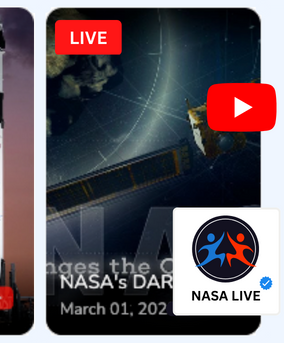How to Optimize Video Content for Search Engines

In the digital era, video content has taken center stage, revolutionizing how businesses and individuals share information. But what good is a stellar video if it doesn't reach its intended audience? The answer lies in optimizing your video content for search engines. But, how exactly do you do this?
The Importance of Video SEO
Understanding Video SEO
Video SEO, or Search Engine Optimization, is a crucial digital marketing strategy. It involves enhancing video content to increase its visibility on search engine results pages (SERPs). This strategy extends beyond simple video creation and uploading - it involves a series of technical and creative methods to make your video content more discoverable and engaging. From keyword research and optimization to transcript addition, video SEO covers an array of tactics that aim to increase the video's visibility, watch time, and click-through rate.
A common misunderstanding is thinking that video SEO solely benefits YouTube content. However, videos hosted on your website, social media platforms, or video-sharing sites other than YouTube also need SEO. Optimizing live streaming video for mobile devices is an example of how SEO transcends beyond traditional video content.
Why Optimize Your Video Content
The optimization of your video content can significantly improve its visibility, helping you reach a broader audience. Search engines, particularly Google, often include video results in their SERPs, presenting an opportunity for your video content to stand out amongst text-based content.
Moreover, the use of video content on your website can increase dwell time, a factor that positively impacts SEO rankings. Dwell time is the length of time a visitor spends on your page before returning to the SERPs. Videos can make your webpages more engaging, compelling visitors to stay longer, improving your page's dwell time.
Using video content can also contribute to a lower bounce rate. A bounce occurs when a visitor leaves your website without taking any action like clicking on a link, filling out a form, or making a purchase. Engaging, relevant video content can encourage visitors to interact with your website, reducing your bounce rate. By doing so, you signal to search engines that your website provides valuable content, boosting your SEO ranking.
Lastly, with an increasing number of people preferring video content over text, optimizing your videos for SEO can improve the user experience. It aids in quickly communicating complex information, entertaining the audience, and forming emotional connections. The article on how video content impacts user engagement and conversions further illustrates the importance of video content in the current digital landscape.
By integrating video SEO into your digital marketing strategy, you can make the most of the potential that video content offers, enhancing your website's visibility and user engagement.
Techniques to Optimize Your Video Content
Keyword Research for Video SEO
Keyword research is just as critical for video SEO as it is for written content. Understanding what your target audience is searching for allows you to create content that answers their questions, using the right keywords to lead them to it. This is where tools like Google Keyword Planner, SEMrush, or Ubersuggest can prove invaluable. These platforms help you identify popular search terms relevant to your content, and integrating these keywords in your video's title, description, and tags can significantly enhance its visibility on search engines.
Transcribing Video Content
Transcribing videos serves a dual purpose. Firstly, it ensures your content is accessible to a wider audience, including individuals who are deaf or hard of hearing, as well as those who might prefer reading to listening in noise-sensitive environments. Secondly, it gives search engines more text to crawl, thereby potentially improving your search ranking. More text allows search engines to better comprehend the relevancy of your content to a user's query, which can subsequently boost your video's positioning on SERPs. For a deeper understanding of the role video transcription plays in SEO and accessibility, the concept is explored in a comprehensive blog post on our website.
Optimizing Video Thumbnails
A captivating, high-quality thumbnail can significantly improve your video's click-through rate. Thumbnails act as a snapshot of your video, providing potential viewers with a quick preview of what to expect from your content. Creating a compelling thumbnail is not simply about choosing an interesting frame from your video - it involves careful design, appropriate sizing, and sometimes even text overlays or branding. A good thumbnail should accurately represent your video content while being intriguing enough to encourage viewer clicks. For more guidance on creating engaging thumbnails, our website provides a detailed how-to guide.
Video Metadata Optimization
Meta titles, descriptions, and tags are essential components of your video metadata. They inform search engines about your content and influence its ranking. A well-optimized title and description, containing your target keywords, can have a substantial impact on your video SEO. The meta title should be an accurate, enticing representation of your video's content, and the meta description should offer a concise summary, naturally incorporating your target keywords. The tags you choose should cover the main topics of your video, including your target keywords and related terms. But remember, while keyword inclusion in your metadata is important, creating a natural, engaging user experience is equally crucial to successful video optimization.
Video Metadata Optimization
Metadata, which includes meta titles, descriptions, and tags, play a crucial role in how search engines understand and rank your video content. A well-optimized title and description, containing your target keywords, can have a substantial impact on your video SEO.
The meta title should accurately reflect the video's content while being enticing to users. The meta description should provide a concise summary of the video, employing your target keywords naturally. Finally, tags should represent the main topics covered in your video, including your target keywords and related terms.
Remember, while it's essential to include keywords in your metadata, it's equally crucial to ensure a natural, engaging read for your audience. Balancing SEO with user experience is key to successful video optimization.
Leveraging User-Generated Video Content
The Power of User-Generated Content
User-generated content (UGC) is an untapped reservoir of authenticity and engagement that can significantly boost your SEO efforts. These are videos created by your customers or audience members, which not only provide unique and original content but also allow you to build a stronger bond with your community. Search engines love fresh, relevant material, and UGC provides exactly that. It continually offers new content for search engines to index, potentially improving your site's visibility and ranking. Furthermore, UGC opens the door to a treasure trove of long-tail keywords, natural language, and diverse topics that enhance your SEO efforts. As you can see, UGC can be a secret weapon in your video SEO arsenal, and the immense power of user-generated video content for brands cannot be overstated.
Strategies for Encouraging User-Generated Content
When it comes to fostering user-generated content, the strategies you can employ are as diverse as your audience. Contests, for example, are a popular and effective approach. By hosting video submission contests, you motivate your audience to get creative and share their unique perspectives on your brand, product, or service.
On a more involved level, building a dedicated community platform is another strategy. This might mean creating a space on your website where users can upload their videos, or forming a group or forum on social media platforms like Facebook or LinkedIn. In either case, the goal is to create a sense of belonging among your audience, empowering them to contribute and share content.
In the end, the strategy you choose will depend on your audience and your brand, but whatever method you opt for, the resulting UGC can significantly contribute to your video SEO. By promoting audience participation, you not only enrich your content pool but also enhance audience engagement and loyalty.
The Role of Video in Web Design and UX
Enhancing User Experience with Video
The implementation of videos can dramatically elevate user experience (UX) on your website. These dynamic elements serve as an engaging medium that can inform, entertain, and captivate your visitors. This tends to result in lengthier visits and a reduction in bounce rates, as visitors stay on your site to watch the video content. What's more, videos can serve as a valuable tool to explain complex concepts or procedures in a user-friendly way, enhancing your site's accessibility.
Integrating Videos in Web Design
Strategically incorporating videos into your website design can transform the entire aesthetics and functionality of your site. Videos can break up long stretches of text, keeping the user engaged and interested. They also offer an interactive element that allows users to engage with the content more actively.
Placing a video on your landing page can immediately capture the attention of visitors, delivering key messages and compelling them to explore further. Meanwhile, tutorial or explainer videos on product pages can provide crucial information about how to use a product, significantly improving UX for e-commerce sites. Furthermore, integrating videos in blog posts or articles can support and enhance the text content, providing a richer, more multifaceted learning experience.
Remember, it's not just about using videos, but about using them wisely. Understanding how to tactfully integrate videos in web design can make a considerable difference in the overall UX and performance of your site.
Conclusion
Optimizing video content for search engines may initially appear daunting, but with the correct strategies, it can substantially amplify your online visibility. This process starts with understanding your audience's interests and needs and producing relevant, high-quality video content that addresses those needs. By leveraging techniques such as keyword research, video transcription, thumbnail optimization, and user-generated content, you can improve your video SEO and enhance your website's UX.
Remember, SEO is an ongoing process that requires continual monitoring and adjustment. So, keep abreast of SEO trends and algorithm changes, and adjust your strategies as necessary to maintain and improve your rankings. Video content is an increasingly critical part of this process, and understanding how to optimize it effectively can provide a significant advantage in today's digital landscape.
FYI: You can embed YouTube Live automatically with the EmbedVidio platform. Start a free trial and display your social media video widgets now.

Embed live video feeds on your website automatically!
Try EmbedVidio and automatically add YouTube, Facebook, and Twitch live video feeds to your website.
All features included with every plan